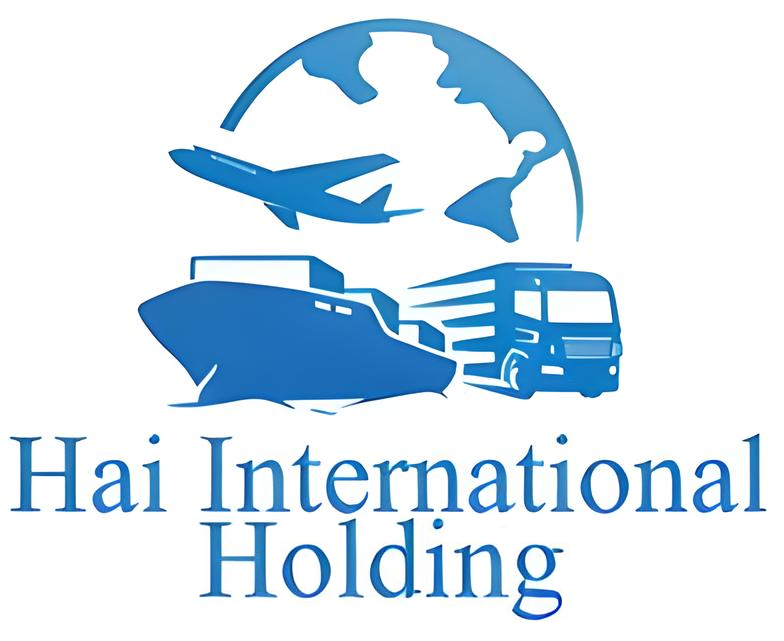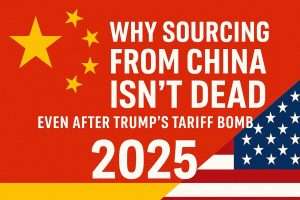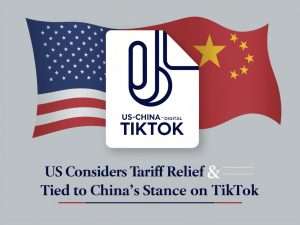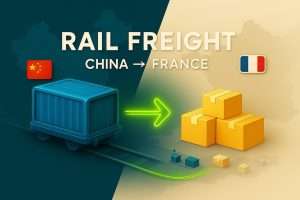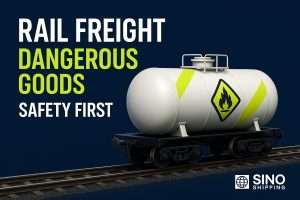Ready to cut costs and boost your profits? Sourcing from China is the key. As the world’s largest manufacturing hub, it offers unbeatable prices and product variety. Whether you’re still looking for the perfect product or ready to launch, this guide will show you how to find the best suppliers and source like a pro.

Two Proven Methods to Source Products from China
What’s the Best Way to Source Products for Your Business?
When it comes to sourcing from China, there are two main approaches you can take. Each has its own advantages, and choosing the right one depends on your needs, experience, and budget.
| Criteria | Direct Sourcing (Alibaba) | Sourcing Company |
|---|---|---|
| Flexibility | High flexibility; can choose suppliers freely | Less flexibility, as the sourcing company chooses suppliers |
| Control | Full control over negotiations and decisions | Less direct control, managed by sourcing agents |
| Time-saving | Time-consuming to research, negotiate, and manage | Saves significant time; agents handle most tasks |
| Cost | Potentially lower costs if handled well | Higher fees (5-10%) but can be worth it for convenience |
| Supplier Relationships | Direct relationships with manufacturers | Pre-existing relationships with trusted suppliers |
| Risk Management | Higher risk of miscommunication or quality issues | Lower risk due to experience and established processes |
| Quality Control | Must personally ensure quality control | Professionally handled quality control and inspections |
Method 1: Directly Negotiating with Manufacturers

This method puts you in full control. You’ll be researching, negotiating, and finalizing deals with suppliers on your own. By cutting out the middleman, you can often secure better prices and build a more direct relationship with manufacturers. However, it requires time and effort to find the right supplier, verify their legitimacy, and negotiate terms that benefit your business. If you’re willing to invest that time, this approach can lead to higher margins and more flexibility in your supply chain.
Method 2: Working with a Sourcing Company
 If handling everything yourself feels overwhelming, using a sourcing company like (HaiPlus by HAI International Holding) might be the right choice. A third-party service will take care of the entire process for you—from finding suppliers to negotiating prices and arranging shipping. While you pay a fee (typically 5-10% of the order value), it saves you the hassle of managing every detail. This is ideal for businesses that prefer a hands-off approach or lack experience with sourcing from China. Plus, sourcing companies often have pre-existing relationships with trusted manufacturers, helping you avoid risks.
If handling everything yourself feels overwhelming, using a sourcing company like (HaiPlus by HAI International Holding) might be the right choice. A third-party service will take care of the entire process for you—from finding suppliers to negotiating prices and arranging shipping. While you pay a fee (typically 5-10% of the order value), it saves you the hassle of managing every detail. This is ideal for businesses that prefer a hands-off approach or lack experience with sourcing from China. Plus, sourcing companies often have pre-existing relationships with trusted manufacturers, helping you avoid risks.
Pro Tip: Use Both Approaches Together
Why choose just one? A smart strategy is to combine both methods. Use direct negotiation to get a feel for pricing and supplier options, while leveraging a sourcing company to compare service quality and streamline logistics. This way, you can decide which approach works best for your specific product and business needs.
The Ultimate Guide to Finding Suppliers on Alibaba
Why Choose Alibaba for Sourcing Products from China?
![]() Are you looking for a reliable and cost-effective platform to connect with manufacturers? Alibaba is the largest B2B platform in the world, making it the go-to marketplace for buyers to source high-quality products directly from manufacturers. It’s not only massive but also safe—thanks to Alibaba’s Trade Assurance, which protects your investment by ensuring on-time delivery and product quality.
Are you looking for a reliable and cost-effective platform to connect with manufacturers? Alibaba is the largest B2B platform in the world, making it the go-to marketplace for buyers to source high-quality products directly from manufacturers. It’s not only massive but also safe—thanks to Alibaba’s Trade Assurance, which protects your investment by ensuring on-time delivery and product quality.
How to Search Smart on Alibaba
Many sellers make the mistake of using Alibaba’s Request for Quotation (RFQ) feature, but this often results in irrelevant responses. Instead, manual searching is far more effective, though it takes more time. Here’s how to optimize your search process to find the best suppliers.
Step-by-Step: How to Find Suppliers on Alibaba
1. Use Specific Keywords
To get accurate results, use long-tail keywords when searching. Generic terms will bring up too many unrelated products. For example, instead of searching for “tap,” use “faucet” to get more precise results. The more specific you are, the better.
2. Use U.S. Spelling

Most Chinese manufacturers use U.S. spelling for products. So, if you’re in the UK, remember to use terms like “faucet” instead of “tap” to match what manufacturers are listing.
Filtering Manufacturers: Key Criteria to Focus On
Once you’ve run a search, the next step is to filter suppliers based on essential criteria. Here’s what to focus on:
Trade Assurance
Make sure the supplier has Trade Assurance. This protects you by guaranteeing shipping dates and product quality. If anything goes wrong, Alibaba steps in to resolve issues.
Verified Supplier

Look for Verified Suppliers, who have undergone third-party inspections. This ensures the supplier is legitimate and capable of meeting your product specs.
Experience
Focus on suppliers who have been in business for at least 3 years. Longevity indicates reliability and a track record of satisfied customers.
Sales Volume
Suppliers with 2 or more diamonds (based on sales volume) are doing a high volume of business, which is a good sign of their trustworthiness and experience.
Ratings
Only consider suppliers with a rating of 4.5 stars or higher. A solid rating, combined with multiple reviews, is a strong indicator of consistent quality.
Key Insights for Sourcing on Alibaba
One thing you should know: ignore the listed prices on Alibaba. These are often just rough estimates and not reflective of what you’ll actually pay. Use them as a benchmark, but real pricing will come after you start negotiating with the supplier.
The Perfect First Contact Email to Suppliers
Does Your First Email to a Supplier Really Matter?
Absolutely! Your first email can make or break your relationship with a supplier. It’s not just about getting a price; it’s about setting the tone for future negotiations. A well-crafted email shows professionalism, helps you stand out from other buyers, and can even impact the pricing you receive.
Four Essential Parts of the Perfect Supplier Email
1. Introduction: Who Are You and What Does Your Company Do?
Start by giving a clear and professional description of your company. Even if you’re a small business or just starting out, present yourself as an established brand. Suppliers are more likely to take you seriously if they believe you represent a serious buyer with potential for long-term business. Mention the types of products you sell and your target market.
2. Product Specs: Be Precise with Your Requirements
This is where you get specific. List all the details of your product, from materials to dimensions. The more detailed you are, the easier it will be to ensure the supplier can meet your exact specifications. Including exact product specs also prevents misunderstandings down the road and saves both you and the supplier time and hassle.
3. Order Quantity: Build Interest by Listing Higher Numbers
Here’s a smart move—when you mention your expected order quantity, list a number 2-3 times higher than what you actually plan to order. This creates the impression that you’re a high-volume buyer, which can help you secure better prices and more attention from the supplier. For example, if you plan to order 500 units, mention an initial order of 1,500 units.
4. Price Request: Ask Politely for the Per-Unit Price
Once you’ve outlined your specs and order quantities, politely ask for the supplier’s per-unit price. Keep your tone professional and straightforward. Let them know that you’re comparing multiple suppliers to find the best fit for your business. This subtle negotiation tactic can encourage them to offer a more competitive rate from the start.
Pro Tip: Present Yourself as a Bigger Brand
Even if you’re just starting out, position yourself as a larger brand. Suppliers are more likely to take your inquiry seriously and offer you better prices if they see potential for long-term business. It’s all about creating the impression that you’re a serious buyer with growth potential.
Tracking Supplier Responses Like a Pro
How Do You Stay Organized When Contacting Multiple Suppliers?
Reaching out to multiple suppliers can quickly become overwhelming if you’re not organized. The key to sourcing efficiently is tracking every detail of your interactions in one place. That’s where a spreadsheet comes in. It helps you keep track of response times, pricing, and whether the supplier meets your product specifications.
Why You Need a Spreadsheet
A spreadsheet isn’t just helpful—it’s essential. By tracking supplier responses, you can easily compare key factors like English proficiency, how quickly they reply, and whether they can produce the product to your standards. This will save you time when making decisions and ensure you don’t overlook any important details.
For example, you can set up columns for:
- Response time (in hours or days)
- English proficiency (on a 1-5 scale)
- Price per unit
- Ability to meet specs (yes/no)
Example Supplier Response Tracker
This table helps you track and compare key supplier details such as response time, English proficiency, price per unit, and their ability to meet product specifications. Use this to stay organized and make data-driven decisions when selecting the best supplier for your business.
| Supplier Name | Response Time (days) | English Proficiency (1-5) | Price per Unit (USD) | Meets Specifications (Yes/No) |
|---|---|---|---|---|
| Supplier A | 2 | 5 | 2.50 | Yes |
| Supplier B | 3 | 4 | 2.75 | No |
| Supplier C | 1 | 3 | 2.40 | Yes |
| Supplier D | 5 | 5 | 2.60 | Yes |
Key Action: Keep Everything Within Alibaba’s Platform
While suppliers may ask to continue discussions on WhatsApp or WeChat, always make sure to keep key communication—like specs, delivery dates, and pricing—within Alibaba’s platform. This ensures you’re protected by Trade Assurance, Alibaba’s built-in system that offers protection if anything goes wrong. Without these details in Alibaba’s chat history, resolving disputes becomes more difficult.
How to Negotiate with Chinese Manufacturers
Want to Get the Best Deal Without Losing Supplier Interest?
When negotiating with Chinese manufacturers, it’s important to play the long game. Jumping straight into pricing talks can turn off potential suppliers. Instead, take the time to build rapport first by discussing product specs, packaging options, and other details for 1-2 weeks. This not only shows that you’re serious but also makes the supplier more likely to offer better rates when you finally talk price.
Don’t Rush into Price Negotiation
Negotiating too soon can signal that you’re only focused on price, which can limit your bargaining power later. Start by asking detailed questions about the product, materials, and packaging, and let them see that you care about quality, not just cost. Once you’ve built a good relationship, you’ll find they’re more willing to negotiate on price.
Two Proven Negotiation Tactics
1. Price by Volume
A great way to negotiate is by asking for pricing based on both your actual order quantity and a larger projected quantity. This allows you to see the supplier’s lowest margin and understand how their pricing scales with volume. For example, if you plan to order 500 units, ask for pricing for 500 units and also for 2,000 units. This way, you get insight into their pricing flexibility and potential future savings.
2. Leverage Future Orders
Another effective tactic is to leverage future orders. Suppliers are more likely to offer discounts if they believe you’ll be a repeat customer. Mention that you have plans to place larger orders in the future, and use this to negotiate a better deal on your current order. It’s a win-win: you get better pricing now, and they secure future business.
Ordering Product Samples
Wondering if You Really Need Product Samples?
Before you commit to a large order, it’s essential to test the product quality by ordering samples. This is your chance to see if the supplier can meet your expectations and deliver on quality, specifications, and durability. Skipping this step could lead to costly mistakes down the line.
Why Samples Are a Must
Product samples give you a real-world feel for what you’re paying for. By evaluating the sample, you can ensure that the manufacturer meets your quality standards before investing in bulk. Without samples, you’re relying on photos and descriptions, which can sometimes be misleading.
What to Expect with Samples
For Low-Cost Products
If your product has a lower retail value (under $30), suppliers will often offer the sample for free, but you’ll be asked to cover shipping costs, which typically range from $25-$30. This is a small price to pay to ensure you’re making the right choice.
For High-Cost Products
With higher-priced products (above $30), you should expect to pay for both the sample and shipping. While it might seem like an extra cost upfront, it’s a worthwhile investment to avoid potential issues with large orders.
Pro Tip: Compare Samples from Multiple Manufacturers
To get the best sense of the quality and pricing, request samples from at least 3-5 manufacturers. This allows you to do a side-by-side comparison and see which supplier offers the best combination of price, quality, and delivery speed. This extra step can save you from choosing a supplier that falls short of your expectations.
Bonus Tips for Sourcing Success
Want to Ensure a Smooth Sourcing Experience? Follow These Proven Tips
Sourcing from China can be incredibly rewarding, but it’s important to protect yourself and get the best value from your suppliers. These bonus tips will help you avoid common pitfalls and streamline the entire process.
Bonus Tip 1: Never Pay More Than 30% Upfront
One of the golden rules of sourcing is to limit your upfront payment to no more than 30%. This minimizes your risk if there are issues with the product or delays in delivery. You should only pay the remaining 70% after the production is completed and a third-party inspection confirms the product meets your standards. This step ensures you’re not left with defective goods and no leverage.
Bonus Tip 2: Always Pay via Alibaba Trade Assurance
Whenever possible, pay through Alibaba Trade Assurance. This feature gives you added protection, ensuring that your money is safe until the product is delivered and meets the agreed-upon quality standards. Be smart about payment methods too—use the cheapest option available, whether it’s a credit card, debit card, or money transfer. This helps you keep transaction costs low while staying secure.
Bonus Tip 3: Get Branded Samples Early
Once production begins, ask the supplier to send branded samples as soon as possible. These early samples can be used for product photography, brand approval, or to send out to influencers for marketing purposes. By getting these samples during the manufacturing process, you’re saving time and ensuring your marketing assets are ready by the time your full shipment arrives.
Why You Should Consider Using a Sourcing Company
Is Managing Everything on Your Own Overwhelming?
If handling every aspect of sourcing—finding suppliers, negotiating, inspecting, and shipping—feels like too much, a sourcing company could be the perfect solution. These companies manage the entire process for you, giving you more time to focus on growing your business while ensuring you get the best deal possible.
Overview of Sourcing Companies
Sourcing companies like HaiPlus take the hassle out of the entire process. From finding reliable suppliers to negotiating prices and handling quality control, they ensure everything is done efficiently. They also manage the shipping process, so you don’t have to worry about logistics. Essentially, you’re getting a full-service experience that lets you focus on what matters most: scaling your business.
Pro Recommendation: HaiPlus
Why choose HaiPlus? This company is trusted, experienced, and offers comprehensive services tailored to meet your needs. HaiPlus assigns you a dedicated agent who works with a network of trusted manufacturers to negotiate the best prices and ensure the product matches your specifications.
How it Works
Using a sourcing company like HaiPlus is simple:
- Provide your product details, specs, and order quantities.
- HaiPlus assigns an experienced agent to handle everything from supplier negotiations to production management.
- You can then compare the prices HaiPlus offers with the ones you found on Alibaba to make sure you’re getting the best deal.
Advantages of Using a Sourcing Company
The biggest advantage? It’s a hands-off process. HaiPlus handles all the heavy lifting, including production management, quality control, and logistics. Plus, they offer extra services like free inspections, 2 months of free storage, and even product photography for your eCommerce store. They also step in for dispute resolution if anything goes wrong with the manufacturer.
Fees
For all these services, expect to pay between 5%-10% of the order value. The larger your order, the lower the fee. For instance, a smaller order might incur a 10% fee, but larger orders can bring that down to 5%.
Pro Tip: Compare Both Options
It’s always smart to compare both options—direct negotiation with suppliers and using a sourcing company. This way, you can see which one offers the best value for your business, both in terms of pricing and time saved.
Final Thoughts: Which Option is Best for You?
Not Sure Whether to Use Alibaba or a Sourcing Company?
The best way to decide is to test both methods. Start by sourcing through Alibaba to explore prices and supplier options, then try a sourcing company to compare service and convenience.
Make Your Decision Based on Data
After testing, choose the option that saves you the most money while still offering quality service. Whether it’s lower costs with Alibaba or more convenience with a sourcing company, let the data guide your decision for optimal results.
FAQ: Sourcing Products from China
What’s the best way to start sourcing products from China?
The best way to start is by using Alibaba or working with a sourcing company. Alibaba lets you directly negotiate with manufacturers, while a sourcing company handles everything for you, from finding suppliers to managing production and shipping.
Is Alibaba safe for sourcing products?
Yes, Alibaba is safe, especially when you use Trade Assurance. It protects your payment and ensures that products are delivered on time and meet quality standards.
Why should I order product samples?
Samples let you test the quality of the product before committing to a large order. It helps ensure that the supplier can meet your quality expectations and avoids costly mistakes.
How can I negotiate with Chinese suppliers?
Build rapport before discussing price. Ask for pricing based on both your current order volume and higher projected volumes. You can also leverage future orders to secure better pricing.
When should I consider using a sourcing company?
If you want a hands-off process, where someone else manages the supplier search, negotiations, and logistics, a sourcing company like HaiPlus can be the best option.
How much does a sourcing company charge?
Most sourcing companies charge between 5-10% of the order value. The larger the order, the lower the fee.
Should I pay the full amount upfront?
No, never pay more than 30% upfront. Pay the remaining 70% after production is complete and a third-party inspection ensures product quality.
Can I trust the prices listed on Alibaba?
Not always. The prices on Alibaba are often just rough estimates. The actual pricing will be confirmed after you start negotiating with suppliers.
